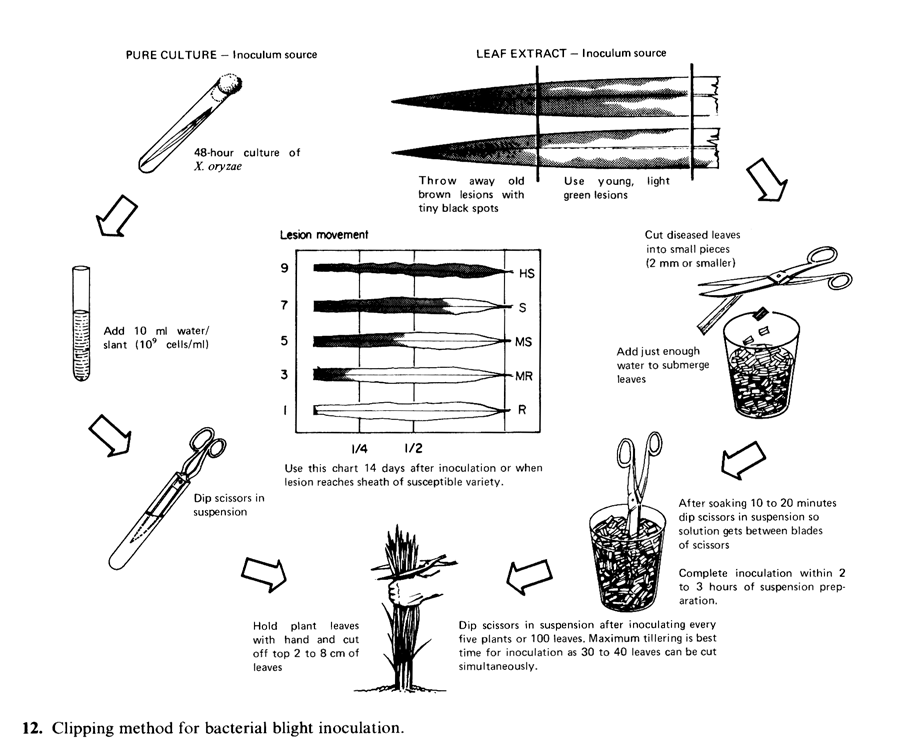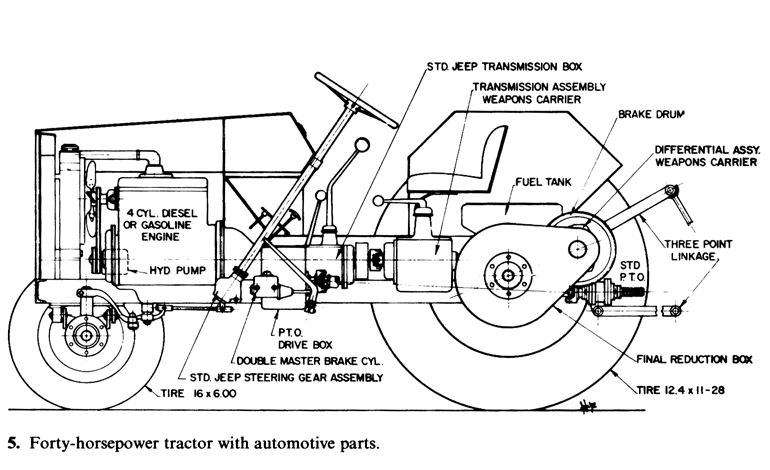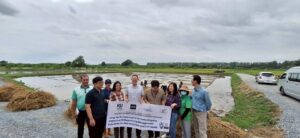Although the IRRI varieties with improved plant type have found acceptance over wide areas, even more important accomplishments of the institute, however, are the introduction of improved genetic materials into national research programs, the development of communication networks among rice scientists, the training of scientific staff, and the upgrading of research and extension programs in many countries throughout the world. In 1972 alone, more than 10,000 seed samples of institute’s breeding lines and varietal collection were supplied to 69 countries. Many genetic lines developed at IRRI but not named by the institute were released as varieties in other countries. A total of 19 IRRI selections have now been named and released for commercial cultivation by different nations.

.
 Director’s introduction
Director’s introduction
The 1972 crop year was marked by an unusual combination of heavy rains and severe drought not only in the Philippines but also in many other rice-growing countries of Asia. In July and August, the Philippines experienced unprecedented rains and floods which damaged thousands of hectares of rice. The poor rainfall in October and November adversely affected rice production on rainfed lowland and upland fields. Drought also significantly reduced yields in India, Thailand, Bangladesh, and Indonesia. The general shortage of rice in 1972 shows that in spite of the availability of improved rice technology, the production on a large portion of the rice land in Asia continues to be greatly influenced by adverse weather conditions particularly drought.
The limited acceptance of IR22 and IR24, which possess a high yield potential and excellent grain quality, demonstrated once again that disease and insect resistance is an indispensable characteristic that must be incorporated in new varieties to ensure their widespread dissemination. On the other hand, IR20, which has somewhat lower yield potential but possesses a broad spectrum of disease and insect resistance, rapidly spread to many new areas including the Philippines, South Vietnam, and Bangladesh, where it is now the most popular variety.
In 1972, the Bangladesh government imported about 7,000 tons of IR20 seed from the Philippines, which is the largest consignment of rice seeds ever imported by any country. IR20 has also begun to make an impact in Ceylon and India. Although IR24 has the limitation of being susceptible to several diseases and insects, it produced 11 t/ha, the highest yield ever recorded in our experimental plots. It has good combining ability in cross-combinations and some of the most promising selections now being evaluated by IRRI inherit their high yield potential from IR24.
The institute will probably continue to name some selections as varieties if they show special promise in more than one country. Although the IRRI varieties with improved plant type have found acceptance over wide areas, even more important accomplishments of the institute, however, are the introduction of improved genetic materials into national research programs, the development of communication networks among rice scientists, the training of scientific staff, and the upgrading of research and extension programs in many countries throughout the world. In 1972 alone, more than 10,000 seed samples of institute’s breeding lines and varietal collection were supplied to 69 countries. Many genetic lines developed at IRRI but not named by the institute were released as varieties in other countries. A total of 19 IRRI selections have now been named and released for commercial cultivation by different nations.
In spite of the high yield potential of new varieties only about 15 percent of the rice land in South and Southeast Asia is planted to high yielding varieties developed at IRRI and by national programs. The institute clearly recognizes that susceptibility to diseases and insects is a strong constraint to further extension of the new technology. Our crossing program was greatly expanded in 1972 to combine diverse sources of resistance to major diseases and insects. A total of 1,000 new crosses were made during the year. Selections with improved plant type and excellent grain quality, which combine resistance to blast, bacterial leaf blight, tungro virus, grassy stunt virus, brown planthopper, and green leafhopper, are now available.
Among selections in advanced stages of testing, IR1529-680-3 appears to be particularly promising. It gave the highest overall yield in replicated trials under lowland as well as rainfed conditions at several locations. It is a cross between IR24 and a progeny of Sigadis/2 x Taichung Native 1. IR1529-680-3 has excellent grain quality and is resistant to blast, bacterial leaf blight, bacterial streak, and green leafhopper, and is moderately resistant to tungro. It is susceptible to brown planthoppers, however. The seed of this selection was multiplied for extensive trials and possible release. Three other improved lines with special merits are IR1514AE666, IR1541-76-3-3, and IR442-2-58. The IR1541 and IR1514A lines have higher resistance to diseases and insects than IR 1529-680-3, and the IR442 line is adapted to growing under upland as well as deep water (up to 60 cm) conditions.
Preliminary evaluation of IRRI selections under a cooperative project in Egypt has shown exciting possibilities. The entire commercial rice crop grown in Egypt is of japonica type but the performance of IR22 and its sister line, IR579-48-1-2, was so encouraging that the Egyptian government has decided to begin an aggressive program for their commercial introduction in the country. IR667-98, which was named Tongil in Korea last year, was commercially grown during the year on 202,000 hectares, about 17 percent of the rice land in that country. The higher yield potential of Tongil compared with local japonica varieties is primarily due to its resistance to lodging. The development of Tongil has shown that the semidwarf plant type introduced in recent years in the tropics can also contribute to the improvement of the yield potential of temperate rice.
Lack of adequate and controlled water supply is another major barrier to attaining high yields. Farmers are hesitant to invest in inputs for rainfed rice because of the uncertainty of rainfall and of prospects of return on their investment. The applied research project on rainfed lowland and upland rice farms started in Central Luzon in 1971 in cooperation with the Philippine government-furnished valuable information. The results of more than 100 trials on farmers’ fields during 1972 confirmed that yields of 4 t/ha can be obtained under rainfed conditions by using an improved package of practices which include new high yielding varieties, adequate fertilization, and insect and weed control. The varieties differed greatly in their performance under moisture stress and the improved package of practices greatly reduced the impact of drought on rainfed rice yields. For example, nitrogen application in combination with weed control was found to partially offset the adverse effect of drought. In addition to management practices, the availability of credit, improved mobility of extension workers, and training of extension workers were the other major contributing factors to increased yields under rainfed conditions.
The plant pathologists and entomologists continued to develop improved sources of multiple resistance to insects and diseases and to improve screening techniques for use in breeding programs. A simple method developed for field inoculation of plant material with bacterial leaf blight consists of clipping leaves with a pair of scissors dipped in the bacterial suspension. This technique has facilitated rapid and large-scale screening of breeding material against this disease.
Detailed investigations on sheath blight, a disease, which is becoming increasingly important in Indonesia, Sri Lanka, Vietnam, and several other countries, showed that a high level of varietal resistance to the disease is available but the reaction is influenced by environmental factors and age of the plant. Varieties resistant in the seedling stage may not be resistant at the adult stage in the field. Therefore, resistance must be evaluated in the field. The discovery of the perfect stage of the causal organism in nature showed that the sclerotium may not be the only source of infection. Various methods of screening varieties for resistance have been evaluated and among them, field inoculation with sclerotia appears to be the most efficient.
A major advance in the chemical control of insects was the development of the concept of placing insecticides about 3 cm below the soil surface near the roots of transplanted seedlings. In several experiments conducted during the year, one such treatment protected the plants during the entire crop duration. That level of insect control can otherwise be obtained only by applying granular insecticides every 3 or 4 weeks. The prolonged effect of applying insecticide in the root zone apparently results from reduced exposure of the insecticide to sunshine, heat, and aerobic bacteria, and from reduced volatilization. A practical method of insecticide placement will have to be developed before it can be recommended for commercial adoption.
Studies by agricultural economists show that inadequate weed control methods on many farms sharply reduce the yield response to fertilizer and the economic benefits of high yielding varieties. Soil microbiologists found that the cheap herbicide 2,4-D which is rapidly becoming popular for controlling annual weeds in transplanted rice is biodegradable and nonpersistent both in lowland and upland soils. Probably the most significant results of herbicide research by the agronomy department was the identification of BASF 3510 (Bentazon) as a potentially inexpensive herbicide for controlling the perennial sedge Scirpus maritimus without visible toxicity to the rice plant.
Cereal chemists and plant breeders continued studies aimed at genetic improvement of grain protein and collected basic information on the nutritive value of rices with varying protein contents. Various indices of protein quality showed consistent increases in the percentage of utilizable protein with an increase in protein content in milled rices containing up to 10 percent protein. Also, increase in the protein content of the rice grain from the usual 7 percent to 9 or 10 percent did not have any adverse effect on the cooking and eating quality of rice. Among several thousand varieties analyzed for lysine, two varieties consistently showed 0.5 percentage point higher lysine content in grain protein in two crops.
Injurious soil conditions limit rice yields over vast areas. Some of the problems can be ameliorated by soil and water management and by heavy fertilization but the cost is often prohibitive. Soil chemists discovered striking differences in varietal resistance to such adverse factors as iron and phosphorus deficiency, manganese, aluminum, and iron toxicity, alkalinity, and salinity. Several selections and varieties have been identified that possess tolerance to one or more of these adverse soil conditions. Thus, a considerable amount of basic information has been gathered to launch a breeding program to combine the resistance of these varieties to adverse soil conditions with other desirable characters to produce genetic lines that may be well suited to injurious soils.
Results further confirmed that zinc is becoming an important yield-limiting factor on large areas of soils well supplied with major plant nutrients and with water. Soil chemists diagnosed zinc deficiency as the yield-limiting factor on more than 47,000 hectares in Agusan del Norte, Philippines, which have long remained uncultivated. Dipping the seedlings in a 2 percent suspension of zinc oxide in water before transplanting-a treatment costing only about US$1.00 per hectare-has enabled farmers to obtain yields of 4 t/ha without any fertilizers.
In continuation of previous work indicating greater nitrogen fixation activity in planted soils than in unplanted soils, microbiologists discovered that large amounts of molecular nitrogen were present in submerged soils planted to rice. Also, a nitrogen-fixing bacterium was isolated from the rhizosphere. These results suggest that the rice plant may transport atmospheric nitrogen to the rhizosphere for microbial fixation.
In work aimed at discovering new avenues of increasing the yield potential of the rice plant, studies in crop physiology confirmed that CO2 enrichment before flowering increased yield by 30 percent by increasing grain number and grain weight and further demonstrated that the critical time for increasing grain number and hence grain yield ranges from 33 days to 14 days before flowering under Los Baños conditions. In the search for varieties that have high photosynthetic rates, more than 300 varieties were screened for net assimiliation rate which is positively correlated with relative growth rate and leaf photosynthetic rate. The net assimilation rate varied by nearly 100 percent among varieties. Other data indicated that nitrogen content per unit of leaf area is the major internal parameter affecting the photosynthetic rate of a single rice leaf and that this criterion might be used for differentiating varieties for photosynthetic rate.
Research on cropping systems led to the elucidation of significant principles regarding the effect of crop combinations on insect and weed populations. When peanuts were interplanted with corn under conditions of heavy corn borer infestation, the population of corn borer larvae was one-sixth of that in corn planted without peanuts. Similar findings in the area of weed control showed substantial increases in the grain yield of an early corn variety when mung bean was interplanted because mung bean successfully reduced weed growth without competing severely with corn.
More intensive cropping practices necessary to increase yields and incomes, particularly those of small farmers in the developing countries have increased interest in the mechanization of agriculture with small low-powered machines. Research in the engineering department indicates that many tasks in the production and processing of rice are suitable for small-scale mechanization, provided the proper machinery designs are made available to local manufacturers. A highlight of the year’s activities in the engineering department was the release and rapid commercialization in the Philippines of the design for a small 5-hp to 7-hp power tiller.
The machine can be manufactured with locally available materials. It has found wide acceptance among smaller farmers because of its simple design, ease of maintenance, and low cost. Commercial manufacturers produced more than 800 tillers in the Philippines during the last 4 months of the year. The tiller is now being evaluated in nine Asian countries under the institute’s cooperative testing program. Other machinery designs, which were released for commercial production, include an inexpensive bellows-type pump for low-lift irrigation, a multihopper seeder for lowland rice, and a 1-ton batch-type drier which can use either an oil burner or a rice hull furnace as the heat source.
A study is being conducted at the farm level in cooperation with institutes in six Asian countries to identify the constraints to higher yield and some of the socio-economic problems associated with the introduction of new technology. Preliminary results indicate that even in the better-irrigated areas chosen for this study, there is a wide variation in the performance of the new rice technology. Yields in many locations fall well below what appears to be the potential based upon experimental results.
The institute continued to stimulate cooperative research and strengthen its links with national programs to further its goal of increasing rice production in different countries. Several new country projects were begun. A comprehensive project was started with the support of the U.S. Agency for International Development to assist with rice and multiple cropping research in Indonesia. Another project was initiated with USAID support to assist the Philippine government with its crop production program. A project on rice processing and storage in Ceylon and one on rice breeding in Egypt were undertaken during 1972. Both projects were funded by the Ford Foundation. A contract was signed with the government of Indonesia to strengthen research at Sukamandi Research Station in Indonesia. The continuing projects in India, Sri Lanka, and Indonesia made satisfactory progress. The project in Bangladesh which was interrupted by war in 1971 has been reactivated and negotiations are underway to expand the project.
The institute started a regional project for the collection and preservation of rice germplasm. The institute staff participated in field collections in Indonesia, Sri Lanka, and Cambodia and added more than 4,000 varieties to the institute’s holdings







